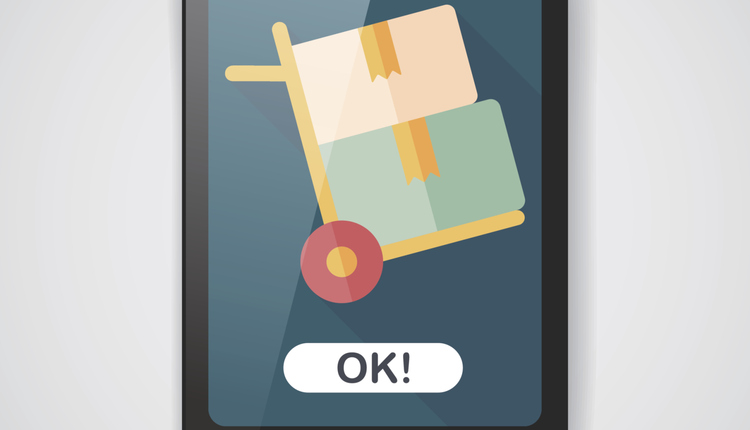Mailers commonly ask me how they can buy environmentally friendly, or "eco-friendly," envelopes for less than envelopes made with virgin fibers. The answer I always give is that right now, given the dynamics of the marketplace, there is much more supply of virgin fiber than recovered fiber, and it is a supply/demand issue. The more expensive the source fiber is to acquire, the more expensive the paper made from that source fiber becomes, at least right now. However, there are a great number of solutions from which you can choose to meet your needs to be more environmentally friendly, but they do not have to break the bank of your company or your customers.
Sustainability vs. Recyclability
Most products today are made from sustainable materials - at least if you accept the common definition that today we are using all of our raw materials more wisely. In effect, we are preserving for tomorrow the resources of today. Raw materials are so expensive you just can get around becoming more sustainable, or you will be out of business.
Recyclability is another matter. To the envelope manufacturing industry, recyclability means that the materials you use to make up the product are all recyclable. They can be easily claimed and reused. All of our papers and some non-paper materials are recovered through the recycling processes we already use. In effect, we follow the paper industry's goal of recovering 60% or more of the total paper we produce. We have done a good job of that - just go to the American Forest and Paper Association's website at www.afandpa.org.
Now focus on a new term, Renewability. Products that are renewable can be replanted to produce more products. You need to keep in mind that the forest products industry focuses on renewability. Trees are a crop, and we plant about 1.2 billion seedlings every year. In fact, for every tree we harvest, three more seedlings are planted. That means we have more forest today than we did in 1900 and we are focused on establishing even more forests.
Sustainable Certification Programs
All of the paper that is sold to make envelopes in North America comes from sustainably managed forests. The paper is all clearly marked with the sustainability program under which it was created.
Here are the key websites for more information:
Forest Stewardship Council (FSC) www.fscus.org
Sustainable Forestry Initiative (SFI) www.sfiprogram.org/
Canadian Standards Certification (CSA) www.certificationcanada.org/english/status_intentions/status.php
In addition, envelope companies are now participating in the Sustainable Green Printing Partnership and you can find out more by going to: www.sgppartnership.org
Unless you are buying paper and printing that is sourced from overseas, you will always be buying paper from a sustainably managed forest, and your envelope supplier has that sourcing information readily available.
Recycled vs. Non Recycled Fibers
Our industry does offer envelopes made from 100% post-consumer fiber. That paper is slightly more expensive than other papers, but if a customer requires total recycled paper content, it can be produced today. We have window films that are produced with cornstarch or glassine window materials. Most mailers still prefer to use polystyrene films due to their optical properties, but again, we do have alternative materials.
Green Labeling
Envelope companies are focusing on marketing green solutions like everyone else and use a variety of different brand names on their recycled products. Some envelopes are marketed for those that want a total FSC-certified product with special gums and adhesives. Some companies are marketing a 100% recycled content product and again, you have a choice of window films depending upon your needs.
Two-Way Envelopes
The industry also has a selection of two-way envelopes that use slightly less paper and the return envelope is the outgoing envelope with an inside flap or a reusable side flap. There is a variety of different designs and many envelope companies carry these products as part of their product lines. Remember, there are basically two types of envelopes: an open side envelope with the seal flap on the top; or an open side envelope with the seal flap on the side. It is just that simple.
Non-Paper Materials
There are varieties of non-paper materials in the marketplace that have their own recycling programs and are for specialized use applications. Some envelopes are made from tri-laminates, meaning a sandwich of paper, plastic and paper. Others are made from different combinations of plastic and they will all provide you with information on the recycling systems that they use.
Please Recycle This Envelope
We hope you will join our Please Recycle campaign and affix this logo to the backside of your envelope. You are an important part of our industry's effort to encourage all mail to be recycled so that we can use the component materials to produce other mailpieces. Your display of this logo signifies your participation in this important program and participation is free to your company. You can download the logo and supporting materials at www.emafoundation.org and just tap on the Please Recycle button.
Sustainability vs. Recyclability
Most products today are made from sustainable materials - at least if you accept the common definition that today we are using all of our raw materials more wisely. In effect, we are preserving for tomorrow the resources of today. Raw materials are so expensive you just can get around becoming more sustainable, or you will be out of business.
Recyclability is another matter. To the envelope manufacturing industry, recyclability means that the materials you use to make up the product are all recyclable. They can be easily claimed and reused. All of our papers and some non-paper materials are recovered through the recycling processes we already use. In effect, we follow the paper industry's goal of recovering 60% or more of the total paper we produce. We have done a good job of that - just go to the American Forest and Paper Association's website at www.afandpa.org.
Now focus on a new term, Renewability. Products that are renewable can be replanted to produce more products. You need to keep in mind that the forest products industry focuses on renewability. Trees are a crop, and we plant about 1.2 billion seedlings every year. In fact, for every tree we harvest, three more seedlings are planted. That means we have more forest today than we did in 1900 and we are focused on establishing even more forests.
Sustainable Certification Programs
All of the paper that is sold to make envelopes in North America comes from sustainably managed forests. The paper is all clearly marked with the sustainability program under which it was created.
Here are the key websites for more information:
Forest Stewardship Council (FSC) www.fscus.org
Sustainable Forestry Initiative (SFI) www.sfiprogram.org/
Canadian Standards Certification (CSA) www.certificationcanada.org/english/status_intentions/status.php
In addition, envelope companies are now participating in the Sustainable Green Printing Partnership and you can find out more by going to: www.sgppartnership.org
Unless you are buying paper and printing that is sourced from overseas, you will always be buying paper from a sustainably managed forest, and your envelope supplier has that sourcing information readily available.
Recycled vs. Non Recycled Fibers
Our industry does offer envelopes made from 100% post-consumer fiber. That paper is slightly more expensive than other papers, but if a customer requires total recycled paper content, it can be produced today. We have window films that are produced with cornstarch or glassine window materials. Most mailers still prefer to use polystyrene films due to their optical properties, but again, we do have alternative materials.
Green Labeling
Envelope companies are focusing on marketing green solutions like everyone else and use a variety of different brand names on their recycled products. Some envelopes are marketed for those that want a total FSC-certified product with special gums and adhesives. Some companies are marketing a 100% recycled content product and again, you have a choice of window films depending upon your needs.
Two-Way Envelopes
The industry also has a selection of two-way envelopes that use slightly less paper and the return envelope is the outgoing envelope with an inside flap or a reusable side flap. There is a variety of different designs and many envelope companies carry these products as part of their product lines. Remember, there are basically two types of envelopes: an open side envelope with the seal flap on the top; or an open side envelope with the seal flap on the side. It is just that simple.
Non-Paper Materials
There are varieties of non-paper materials in the marketplace that have their own recycling programs and are for specialized use applications. Some envelopes are made from tri-laminates, meaning a sandwich of paper, plastic and paper. Others are made from different combinations of plastic and they will all provide you with information on the recycling systems that they use.
Please Recycle This Envelope
We hope you will join our Please Recycle campaign and affix this logo to the backside of your envelope. You are an important part of our industry's effort to encourage all mail to be recycled so that we can use the component materials to produce other mailpieces. Your display of this logo signifies your participation in this important program and participation is free to your company. You can download the logo and supporting materials at www.emafoundation.org and just tap on the Please Recycle button.
Maynard H. Benjamin, CAE is President and CEO, Envelope Manufacturers Association. For more information, please visit www.envelope.org.







